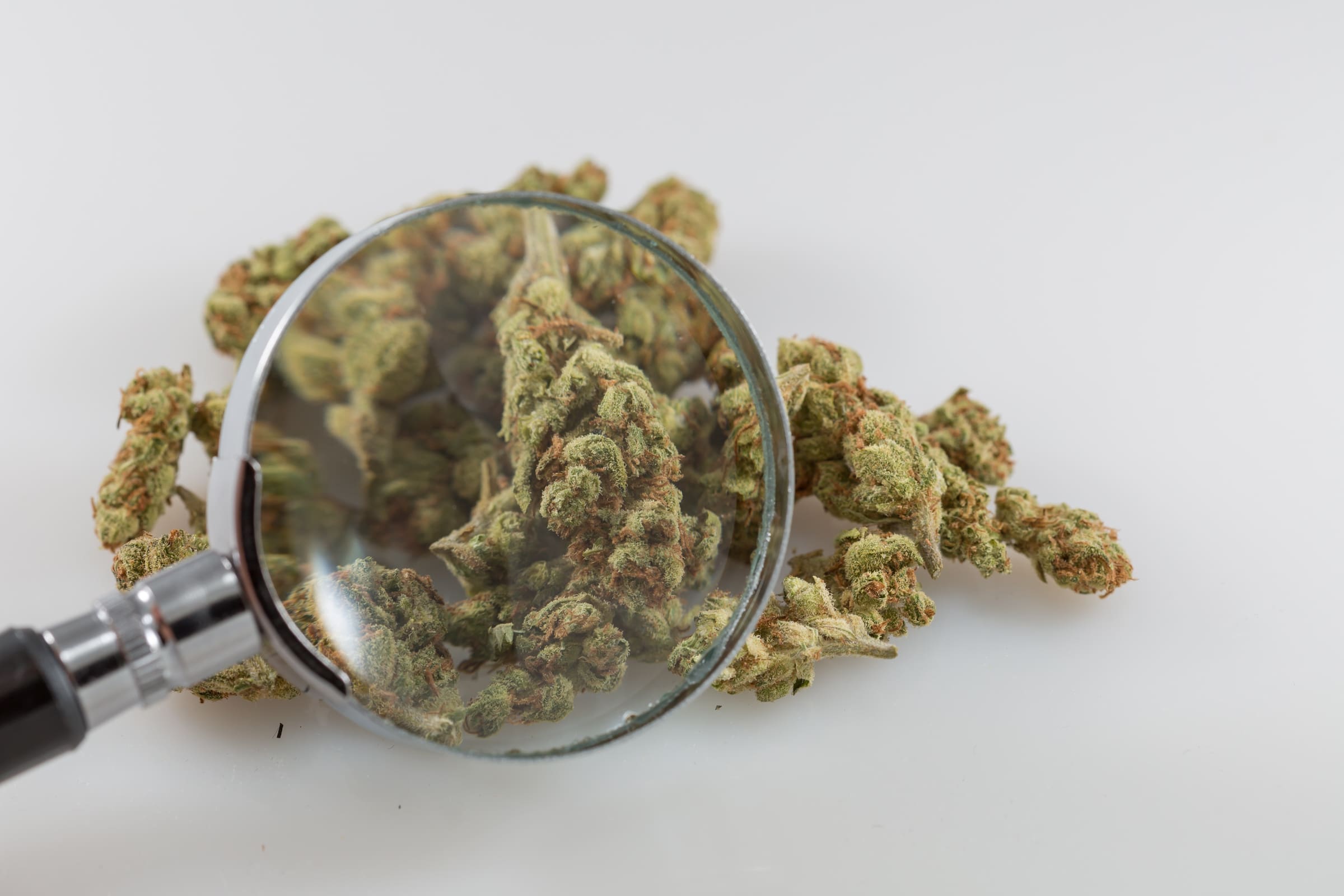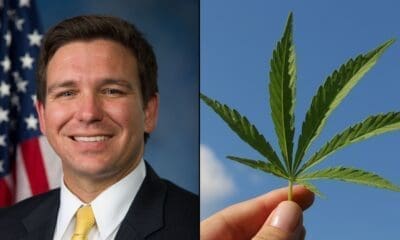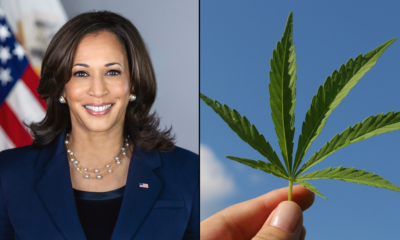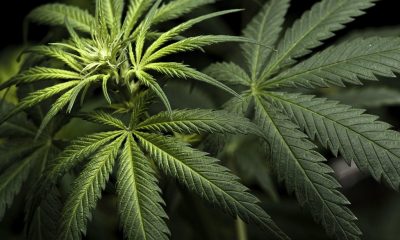Politics
Federal Report On Marijuana Legalization Required Under New Bill

What is the impact of marijuana legalization in states that have adopted it? That’s what the proponents of a newly filed U.S. House bill are hoping to find out.
The Marijuana Data Collection Act, introduced on Tuesday by Rep. Tulsi Gabbard (D-HI) and a bipartisan group of cosponsors, would direct the Department of Health and Human Services to partner with other federal and state government agencies to study “the effects of State legalized marijuana programs on the economy, public health, criminal justice and employment.”
“For decades, bad data and misinformation have fueled the failed war on drugs that’s wasted billions of taxpayer dollars, incarcerating Americans for nonviolent marijuana charges,” Gabbard said in House floor speech previewing the bill on Monday evening. “Our outdated marijuana policies have turned everyday Americans into criminals, strained our criminal justice system, cost taxpayers tremendously and torn families apart.”
#ICYMI: Gabbard, @RepCurbelo Bill Builds Bipartisan Momentum Behind Federal Marijuana Reform https://t.co/idJnPYADtj pic.twitter.com/D9kFpTzmUM
— Rep. Tulsi Gabbard (@TulsiPress) July 24, 2018
If the legislation is enacted, the National Academy of Sciences would carry out the research and publish initial findings within 18 months, with follow-up reports to be issued every two years after that.
So far, the bill’s backers seem to consist solely of those who support marijuana law reform, a situation that legalization advocates decried.
“This is not a marijuana bill, it is an information bill,” Justin Strekal, political director for NORML, said in an interview. “No member of Congress can intellectually justify opposition to this legislation. Our public policy needs to be based on sound data and science, not gut feelings or fear-mongering. Approving the Marijuana Data Collection Act would provide legislators with reliable and fact-based information to help them decide what direction is most beneficial to society when it comes to marijuana policy.”
In 2016 alone, nearly 600,000 people were arrested for marijuana possession. Our laws must be informed by facts — not emotion, manufactured stigma and myths.
— Rep. Tulsi Gabbard (@TulsiPress) July 24, 2018
Leading prohibitionist organization Smart Approaches to Marijuana did not respond to a request for comment about its position on the legislation.
Gabbard held a Tuesday morning press conference with other supporters, including lead GOP cosponsor Rep. Carlos Curbelo (R-FL) and former U.S. Attorneys Barry Grissom of Kansas and Bill Nettles of South Carolina.
W/ overwhelming support for state regulation of marijuana in #FL26 , federal government must stop being an obstacle to modernizing our #cannabis laws. Proud to introduce the #Marijuana Data Collection Act with @TulsiPress today to ensure state data is collected by @theNASciences. pic.twitter.com/DAgl12Vodw
— Rep. Carlos Curbelo (@RepCurbelo) July 24, 2018
Other original cosponsors of the bill include Reps. Don Young (R-AK), Darren Soto (D-FL), Beto O’Rourke (D-TX), Earl Blumenauer (D-OR), Dana Rohrabacher (R-CA), Matt Gaetz (R-FL), Peter DeFazio (D-OR), Eleanor Holmes Norton (D-DC), Dina Titus (D-NV), Charlie Crist (D-FL), Tom Garrett (R-VA), Lou Correa (D-CA), Barbara Lee (D-CA), Mark Pocan (D-WI) and Salud Carbajal (D-CA).
Federal drug policies should be based on facts and not some reefer madness-mentality from a century ago. I am proud to introduce the Marijuana Data Collection Act along with a bipartisan group of House Members. https://t.co/ZgcnUpAvIs
— Dina Titus (@repdinatitus) July 24, 2018
Here are the specific data points the bill directs federal officials to track:
REVENUES AND STATE ALLOCATIONS
The monetary amounts generated through revenues, taxes, and any other financial benefits. The purposes and relative amounts for which these funds were used. The total impact on the State and its budget.
MEDICINAL USE OF MARIJUANA
The rates of medicinal use among different population groups, including children, the elderly, veterans, and individuals with disabilities. The purpose of such use. Which medical conditions medical marijuana is most frequently purchased and used for.
SUBSTANCE USE
The rates of overdoses with opioids and other painkillers. The rates of admission in health care facilities, emergency rooms, and volunteer treatment facilities related to overdoses with opioids and other painkillers. The rates of opioid-related and other painkiller-related crimes to one’s self and to the community. The rates of opioid prescriptions and other pain killers.
IMPACTS ON CRIMINAL JUSTICE
The rates of marijuana-related arrests for possession, cultivation, and distribution, and of these arrests, the percentages that involved a secondary charge unrelated to marijuana possession, cultivation, or distribution, including the rates of such arrests on the Federal level, including the number of Federal prisoners so arrested, disaggregated by sex, age, race, and ethnicity of the prisoners; and the rates of such arrests on the State level, including the number of State prisoners so arrested, disaggregated by sex, age, race, and ethnicity. The rates of arrests and citations on the Federal and State levels related to teenage use of marijuana. The rates of arrests on the Federal and State levels for unlawful driving under the influence of a substance, and the rates of such arrests involving marijuana. The rates of marijuana-related prosecutions, court filings, and imprisonments. The total monetary amounts expended for marijuana-related enforcement, arrests, court filings and proceedings, and imprisonment before and after legalization, including Federal expenditures disaggregated according to whether the laws being enforced were Federal or State. The total number and rate of defendants in Federal criminal prosecutions asserting as a defense that their conduct was in compliance with applicable State law legalizing marijuana usage, and the effects of such assertions.
EMPLOYMENT
The amount of jobs created in each State, differentiating between direct and indirect employment. The amount of jobs expected to be created in the next 5 years, and in the next 10 years, as a result of the State’s marijuana industry.
















